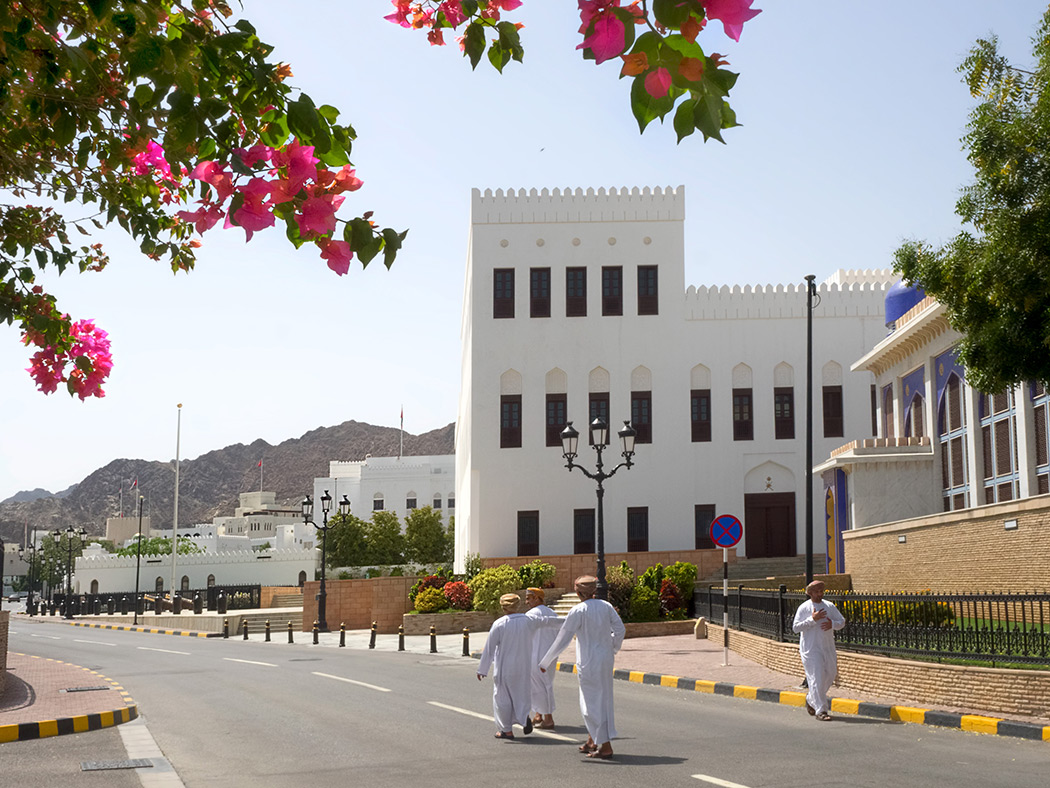On my first day in Muscat, the capital of Oman, I hopped in a taxi at noon and told the driver to take me to Old Muscat. He pulled up in front of Al-Alam Palace, home to the country’s leader, Sultan Qaboos bin Said Al Said. “Do you have water?” he asked. “No, but I’ll be OK,” I answered. “I can buy a bottle if I need some.” As I reached for the door handle he made one last attempt. “Everything is closed…” I waved him off and stepped out of the taxi. Three seconds later, a suffocating wave of heat rose up from the asphalt and engulfed me. I looked up just as he sped away.
Fortunately, heat doesn’t bother me much, so I headed off to explore this small village that once was the capital of Oman. A sea of bleached, alabaster houses and palaces stretched before me. Behind them, desolate, desiccated mountains were a constant reminder that I was in a desert. The only sign of life was four Omani men, all wearing dishdasha (ankle-length white collarless caftans) and traditional caps known as kumma. As sweat began to trickle down my forehead and dampen my shirt, the wisdom of white houses and clothing became excruciatingly obvious.
Luckily, I found the only open cafe in town, run by an Indian immigrant. He patiently explained that everything shuts down between 1 and 4 p.m. in Oman to wait out the midday heat. After a rest in the air conditioning and a light meal I thanked him and hit the streets of Old Muscat again. But this time I had a quart of water under my arm.

